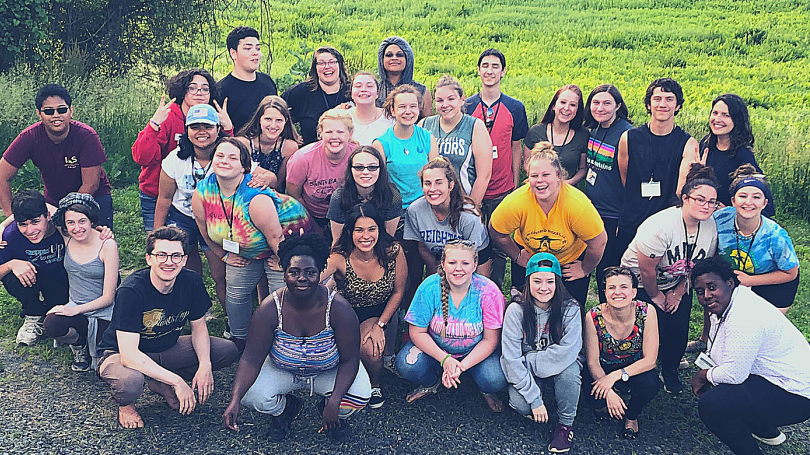CLAREMONT — Twelve incoming juniors at Stevens High School will devote part of the 2019-20 school year to working with student-mentors, taking a college-readiness course and participating in academic enrichment opportunities, as part of a new partnership with Dartmouth College.
Stevens was one of three Upper Valley area high schools chosen this year to partner with the Summer Enrichment at Dartmouth (SEAD) program, which helps promising high school students from first-generation or low-income families prepare and transition into college. The other participating schools are Rivendell Academy in Orford and Hartford High School in White River Junction, Vermont.
Stevens Principal Patricia Barry said students selected for SEAD demonstrate academic potential but, whether because of economic hardship or coming from families with no college experience, may find the notion of college overwhelming.
“This is a whole new process for them,” Barry said. “They don’t know the ropes around touring colleges or applying. Or they get overwhelmed by the cost, and they don’t know the processes by which to obtain financial aid.”
Barry said this apprehension about debt appears to factor into Claremont’s statistically low rate of college attendance.
Barry said despite the district’s high poverty rate and low rate of college attendance, Stevens graduates a large number of students with more completed academic credits than much of the state.
“Fifty-one percent of our students who graduated in 2019 graduated with the highest-credit diploma of 27 credits,” Barry said. “What’s not matching up is that we have a majority of our students graduating with a diploma of distinction, and yet we have a low college attendance rate.”
This is the 17th year of SEAD, but the program’s first year working exclusively with schools in the Upper Valley. In past years, SEAD recruited students from cities and towns nationwide.
Ashley Doolittle, associate director for the Dartmouth Center for Social Impact, which sponsors SEAD, said working with local students allows for stronger relationship building between the mentoring Dartmouth students and high school students, more on-campus visits by the high schools and more opportunities for mentors to interact with students and others in the surrounding community.
SEAD began working with the new high school students in the spring of their sophomore year. In June, the students from all three participating high schools spent a full week on the Dartmouth campus. They participated in community building activities, academic courses in health and crafting an argument, and enrichment activities, from local hikes and community outings to working in a greenhouse.
Doolittle said that during the 2019-20 school year, the high school students will meet once per week for two-hour sessions, where they will continue learning the knowledge essential to applying to colleges, including filling out college applications, researching schools, acquiring financial aid, preparing for the SAT exam and writing a college essay.
SEAD is a four-year program and will continue working with this cohort until their sophomore year in college, which includes three more summer sessions on the Dartmouth campus.
SEAD continues providing support to the cohort students through their first year of college, because studies show that students who can weather the transition of their first year have a much better chance to get through all four years, said Ray Curren, guidance counselor at Stevens.
“There are students who graduate who unfortunately are not ready to go,” Curren said, stating that they may have the academic ability, but are not ready emotionally or mentally for the transition to college life.
Sometimes students drop out because they do not know how to manage their finances.
“They have a boatload of money their first year, but then all that financial aid disappears,” Barry said.
Doolittle said that SEAD will continue working with the cohort students regardless of where the students attend school, in which case mentors continue communicating with the students digitally and through regular sessions planned around the student’s schedule.
“To be able to maintain a connection with one’s mentor [during the first year of college] is really valuable,” Doolittle said. “It helps to have someone with them through their first year who can help them find resources that are available.”
In addition to the partnership with Dartmouth, Barry said that this year’s incoming 9th- and 10th-grade students are part of a Gear Up grant program, a federally-funded program that will award a $7,000 scholarship to any of these 9th- or 10th-grade students who attend a New Hampshire state college after graduation.
“And we are focusing our resources around this grant on college and career readiness, which we started when they were in 7th and 8th grade,” Barry said. “[We did this] knowing that if we can get kids excited and on college campuses in the middle school, then they’ll be more likely to go to college.”
While Barry wishes that these grants and opportunities could be extended to more students, she said that the goal is to embed these best practices in preparing students into the district’s process.
“You are showing your school board that, by budgeting for this, if you are increasing the number of students who go to college and stay in college, that these programs are something that they have to support,” Barry said.
